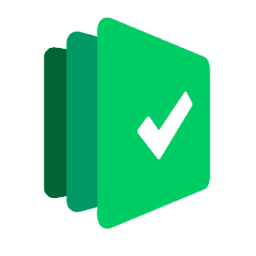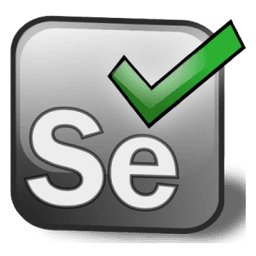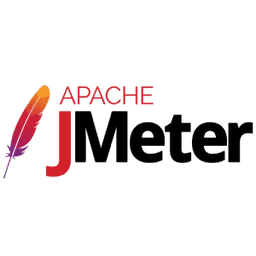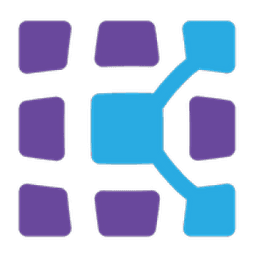- Home
- Blog
- API Management & testing
- Best Testing Tools for every Software Tester

In the software testing environment, tools are defined as products that assist in performing testing works like planning, Designing, Test case execution, defect finding, and analyzing test cases. Testing tools are classified on the basis of several factors like
- The objective of the tool
- Testing activities that are carried out in that tool
- Testing type/level that is supported by that tool
- Type of authorization(the tool is open source/freeware)
- The technology used in that tool.
| If you want to Enrich your career with an API Testing certified professional, then visit Mindmajix - A Global online training platform: “API Testing Certification Course” Course. This course will help you to achieve excellence in this domain. |
Testing Tools List
- Test Management Tools
- Automation Testing Tools
- Cross-Browser Testing Tools
- Load Testing Tools
- Bug Tracking tools
- Mobile Testing Tools
- API Testing tools
- Security Testing Tools
- Mainframe Testing Tools
Types of Software Testing Tools
#1. Test Management Tools
The word “Test Management” contains everything that a tester performs. With the support of efficient test management tools, testers carry out certain activities like creating and preserving the project cycle, Building and maintaining the Test artifacts for every release, test executing, Bug management, etc. The best test management tools available in the market are as follows:
1. Testpad

The Testpad tool is used for managing manual test activities. It uses a pragmatic approach to find the bugs that are critical and sensitive. Testpad uses checklist-based test cases which adapt different kinds of testing like exploratory testing, steer testing, Manual face of agile testing, and conventional test cases, etc. Features of the Testpad tool are as follows:
- Assigning to workmates or inviting guest testers through emails.
- Tests are easy to write, cut, and alter.
- Ideal for catching up with agile product development.
- Testers will have an ample amount of time for actual testing.
- we can dispatch results and scripts as CSV for evaluation in other tools.
2. Qtest
Qtest is the no.1 test management tool for QA teams and Agile testing teams. It offers an easy-to-learn and easy-to-use testing environment which continuously integrates with JIRA and other automation tools. With the support of Qtest, every step of testing is made simple and efficient. Features of Qtest are as follows:
- It supports every type of testing like Agile testing, Functional testing, etc.
- It establishes and handles test cases very efficiently.
- It supports the iterative running of test execution suits.
- It runs test cases based on certain configurations and metrics.
- It maintains test execution and test case reports.
#2. Automation Testing Tools
Automation testing is defined as a process of utilizing a tool to implement our test case suite. Automation tools enter the data of the application under test, to compare expected and actual results and create detailed reports.
To make a development life cycle successful, we need to execute the same test suite repeatedly. With the help of a test automation tool, we can replay the recorded test suite. The objective of automation is to decrease the number of test cases to run manually and not to remove manual testing completely.
Need for Automation Testing
Automation testing is essential because of the following reasons
- To test workflows, and negative scenarios manually we need to consume a lot of time.
- Multilingual websites are difficult to test Manually.
- Test execution speed is increased with the help of automation testing.
Some of the essential Automation testing tools are as follows:
1. Ranorex

Ranorex Studio is considered a set of tools with a codeless interface and for automation professionals, it provides IDE for java,c#, and open API. Due to its wide technology support, we can test different kinds of applications like a web application, mobile application, etc. Important Features of Ranorex studio as follows:
- It supports UI test automation to deliver outcomes at the speed of DevOps.
- We can get feedback fastly as automated test cases are executed fastly.
- We can increase the test scope by invoking smoke testing for every release and regression testing for significant releases.
- We can use our resources efficiently by running our automated tests continuously.
- Ranorex supports all major testing types like smoke testing, regression testing, cross-browser testing.
2. Selenium

Selenium is defined as an open-source testing suite for web applications throughout various browsers. It is the same as Quick Test Pro(QTP) and the only difference is that selenium concentrates on automating network applications.
It is a collection of software which are used depending on the necessity of the enterprise. It has four important elements they are:
- Selenium integrated development environment.
- WebDriver
- Selenium Remote control.
- Selenium Grid.
Features:
- It controls the execution speed of the test cases.
- It enables the execution of the complete test suite.
- It enables users to pause or resume a specific test case.
- It allows the execution of preferred test cases.
- Through Breakpoints, we can debug specific test cases.
[ Related Article: What is Selenium Testing ]
3. QTP(Quick Test Pro)

QTP is extensively used for regression and functional testing. It deals with every significant software environment. By using keyword-driven testing it eases test creation and maintenance.
Features:
- It supports both the record and playback of test cases.
- QTP testing is mainly based on VB script Scripting language.
- QTP tools allow the testers to perform automated functional testing continuously,
- It supports testing of Desktop and web-based applications.
- It enables Business Test Proces(BTP).
4. Telerik

Telerik Test Studio is the new automation testing tool introduced by Telerik. Tester with zero knowledge of coding can use Telerik Test studio. Testers can execute test scripts either by developing scripts or by using record and playback features provided by Telerik Test studio.
Features:
- It can communicate with any file-based source control system and supports the integration of GIT.
- It eases test script maintenance and test script changes are easily integrated.
- It supports test scripts sharing with other teammates by using source control/
- It supports remote execution and test scheduling.
- Telerik uses the DOM structure of the webpage to determine object properties.
5. Test complete

Test complete is a test automation tool, developed by SmartBear. It provides support to various technologies like VB script, C++, java, html5, etc. Test complete offers testers to develop test cases in different scripting languages like VB script, Javascript, python, etc.
Features
- It can easily integrate with bug tracking software like Jira, Bugzilla, etc.
- It allows testers to develop the scripts from scratch or modify the recorded scripts.
- It supports data-driven testing by extracting data from CSV files, Excel sheets.
- It enables the testers to take screenshots while executing test cases so that they can distinguish between actual and expected screens.
#3. Cross-Browser Testing Tools
To evaluate our web app performance across several web browsers we test our application on various web browsers. To test our application on various web browsers we use different cross-browser testing tools. Top cross-browser testing tools are listed below:
1. Browserstack

Browserstack allows testers to do the browser testing on the Desktop browser and Mobile browser. Browserstack is cloud-based, so it does not require any installation. Previously installed tools are sufficient for quick cross-browser testing and debugging.
Features
- It supports various operating systems like opera mobile, windows OS, Ios, Android, etc.
- Browser-stack allows you to establish a testing environment that supports firewalls and the Active directory.
- Testers are allowed to test pages remotely with the help of a browser stack.
2. Cross Browser Testing

Cross-browser testing is introduced by a company called SmartBear. Due to its cloud-based real device lab, every web experience is perfect.
Features
- we can replace Device Labs with Mobile Labs.
- with the help of our session videos, we can document bugs and expectations.
- Once the execution of selenium scripts is finished, we can run screenshots.
- we can share screenshots through email, Jira, Slack.
- Real-time scenarios are authenticated correctly.
3. SauceLabs

It uses the cloud-based testing platform to test mobile and web apps. It tests your web and mobile apps across hundreds of browsers and OS amalgamations.
Features:
- It supports testing on both real and virtual devices(simulators)
- As we can access live breakpoints, investigation on the problem is done manually.
- Previously executed test cases are listed in chronological order.
- Advanced analytical tools help you to identify test failures.
- Debugging tools facilitate the developer to identify defects quickly and speed up releases.
4. Browserling

Browserling enables testers and designers to access different browsers and operating systems so that they can do cross-browser testing very smoothly. With the help of individual servers and machines, users can connect to real browsers. Browserling integrates another browser into the existing browser, In order to see how your website works.
Features:
- We can change screen size and resolution for our responsive testing requirements.
- We can install the latest browsers as soon as they are released.
- We can perform local testing through SSH Tunnels.
- We can integrate the web browsers into our application with the help of Live API
- While performing cross-browser testing, we can interact with browsers.
#4. Load Testing Tools
Load testing tools are utilized to find the speed, reliability, expandability of the system, application, program. Some popular Load Testing Tools are Listed below:
1. LoadRunner

This load testing tool is developed by microfocus, and it is utilized to assess the efficiency and result of the system when the proper load is applied. A most important feature of this tool is it can create and manage 1000 users concurrently.
Features
- It Reduces software and hardware costs by forecasting system capacity properly.
- Efficient tool utilization monitoring.
- Identifying the main reason for application performance problems.
- Reducing the distributed load testing expenses.
2. Wapt
Wapt is the best testing tool for monitoring the performance of any web application. With the support of this tool, you can test the web application under different testing loads and environments. Wapt tool is mainly used for testing the compatibility of the web application with various operating systems and browsers.
3. Jmeter

It is developed by apache, and this tool is an open-source(freely available) tool. It is considered the best load-testing tool and can be incorporated with the test plan.
This tool is also used to create a functional test plan. Originally, JMeter was developed for testing the web application, but later its scale has been extended as it started to test the functional efficiency of different resources like Perl scripts, Java objects, etc.
[ Related Article: What is JMeter ]
4. Blazemeter

- Blazemeter is popularly known for testing mobile application performance.
- Blazemeter utilizes Amazon cloud services for test execution.
- It provides Pluggable support for drupal, JMeter, googles analytics.
- Blazemeter is used in agile methodologies as it supports continuous integration tools like Jenkins, TeamCity.
- Another essential feature of Blazemeter is its script engine. Jmeter is used as a scripting component.
#5. Bug Tracking Tools
1. Jira

Many IT Professionals widely use Jira as a bug-tracking tool due to its user-friendly framework. Features of Jira tool is as follows:
- It is a commercial product and helps to fix the team issues.
- This tool incorporates the development environment,
- It backs agile projects.
- As it can track any issue, the Jira tool is not limited to the software industry.
[ Related Article: What is Jira ]
2. Bugzilla

Bugzilla is an open-source bug tracking tool. It has some features like
- Planning day-to-day, monthly, weakly reports.
- Charts and reports.
- Automatic identification of duplicate bugs.
- Notifying modification in code through email
3. Bugnet

Bugnet is an issue tracking system and is developed in ASP.NET Platform. Mysql is the database for this tool. It holds all which are necessary for establishing projects.
Features of the budget are as follows.
- Notifying emails
- Simple administration and browsing
- 24/7 Live support
4. Redmine

Redmine is an open-source bug tracking tool that incorporates source code management. It is a web application developed by the Ruby on Rail framework. Features of Redmine are as follows:
- It supports multiple databases.
- It creates issues through email.
- Responsive issue tracking system.
5. Mantis Bug Tracker
![]()
Compared to other bug-tracking tools, this tool is easy to use. Mantis bug tracking has both web and mobile versions. Features of the Mantis Bug Tracker Tool are as follows:
- Integration of Source Control
- Facilitates bug tracking
- Notification through emails.
#6. Mobile Testing Tools
Automated tools are necessary for testing mobile apps. Adequately structured automated testing can minimize the time for performing the testing process.
Some popular mobile testing tools are as follows:
1. Appium

Among the other mobile testing tools, appium is the most popular tool which is used extensively for testing mobile apps. Appium studio enables you to perform the appium testing within the IDE.
- Appium is suitable for testing apps developed in Android or ios SDK.
- It can incorporate any mobile testing tool and a continuous integration environment.
- It supports every browser which is built on android or ios.
- It supports different languages like python, PHP, java, ruby, etc.
[ Related Article: What is Appium ]
2. Perfecto

- It offers cloud-based manual and automation testing.
- It assists all open-source and free platforms.
- It provides testing of windows, android and ios phones.
[ Related Article: Mobile Testing Interview Questions and Answers ]
3. Experitest

It speeds up the mobile testing cycles and enhances the quality of deliveries with large amounts of automated android testing. Features of Experitest are as follows:
- We can execute a large number of automated tests concurrently.
- We can incorporate any testing framework, IDE, and continuous integration for quick application release.
- The primary appium test is created smoothly.
- Sophisticated analytics and visual test reports are available.
4. Kobiton

While testing through Kobiton, we can gain full access to mobile devices. Kobiton grasps every activity performed during testing practices. Features of the Kobiton testing tool are as follows:
- It can test any type of web and mobile apps.
- We can test through many devices without modifying the script.
- We can identify the issue quickly with the help of activity logs, screenshots, and commands.
- We will add hardware and operating system updates continuously.
5. UI Automator

This testing tool is mainly used for testing the user interface through functional test cases. Features of this testing tool are as follows:
- Ui Automator performs testing with the help of javascript.
- It can run over any app on many devices.
- It is freeware(open-source).
#7. API Testing Tools
Nowadays, API testing has become essential due to the extensive usage of agile development practices to develop software. Some of the critical API testing tools are as follows:
1. Rest Assured
![]()
It is a freeware(open source) API testing tool that is used for testing REST Service. Features of this testing tool are as follows:
- It has several built-in functionalities, which ease the testing procedure.
- It provides a facility for merging UI and REST tests to enhance the test reports.
- Knowledge of HTTP is not required.
[ Related Article: Types of API Testing ]
2. SoapUI

This testing tool is used for testing Soap APIs, REST, and Web services. Features of this testing tool are as follows:
- We can create the test case easily with a drag and drop interface.
- With the help of groovy, we can establish custom code quickly.
- You can reuse the previous test cases.
[ Related Article: What is SoapUI ]
3. Apigee
This API testing tool is used to evaluate and check the API outcome and assists in building the API using tools like Swagger. Features of this tool are as follows:
- It allows you to develop, test, and implement APIs.
- It can detect efficiency issues by tracing the traffic of API.
- Javascript backs it.
4. Postman

Initially, it was a google chrome plugin, and later on, it began to provide API Testing. It is suitable for those who do not have much knowledge of coding. Features of the Postman testing tool are as follows:
- user-friendly interface.
- It provides the facility to develop boolean tests.
- Postman is secure for sending and receiving REST information.
[ Related Article: Postman Tutorial ]
5. Katalon studio

This testing tool provides a combined environment for mobile, API/Web Services, and UI functional Testing. Features of this tool are as follows:
- It offers a test of both RESTFUL and SOAP requests.
- It can do exploratory and automated testing.
- It provides data-driven procedures.
#8. Security Testing Tools
1. Arachni

It is an open-source testing tool, which identifies the security issues of a web application. The features of the Arachni testing tool are as follows:
- It detects SQL and XSS injection.
- It can be deployed immediately.
- It supports multi-platforms.
2. Owasp

OWASP is a non-profit organization that concentrates on enhancing the security of software. This project has several penetration testing tools like
i) Zed Attack Proxy
It identifies the security issues of a web application by pretending to be a real attack.
ii) OWASP Dependency-Check.
It examines the project dependencies.
iii) OWASP Web Testing Environment Project.
#9. Mainframe Testing Tools
Mainframe testing tools are used to test the mainframe systems.
1. Xpediter

Xpediter is a mainframe testing tool, through which developers can test mainframe systems with low effort. The features of the Xpediter testing tool are as follows:
- We can see the purpose of every instruction.
- we can control all the data variables of a test session.
- we can acquire complete control on testing.
 On-Job Support Service
On-Job Support Service
Online Work Support for your on-job roles.

Our work-support plans provide precise options as per your project tasks. Whether you are a newbie or an experienced professional seeking assistance in completing project tasks, we are here with the following plans to meet your custom needs:
- Pay Per Hour
- Pay Per Week
- Monthly
| Name | Dates | |
|---|---|---|
| API Testing Training | Jan 13 to Jan 28 | View Details |
| API Testing Training | Jan 17 to Feb 01 | View Details |
| API Testing Training | Jan 20 to Feb 04 | View Details |
| API Testing Training | Jan 24 to Feb 08 | View Details |

As a Senior Writer for Mindmajix, Saikumar has a great understanding of today’s data-driven environment, which includes key aspects such as Business Intelligence and data management. He manages the task of creating great content in the areas of Programming, Microsoft Power BI, Tableau, Oracle BI, Cognos, and Alteryx. Connect with him on LinkedIn and Twitter.




